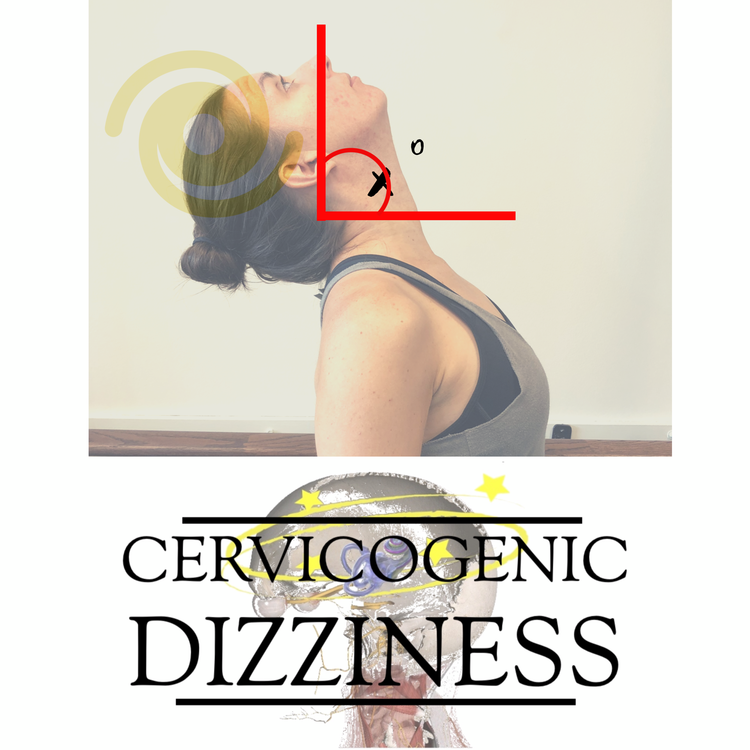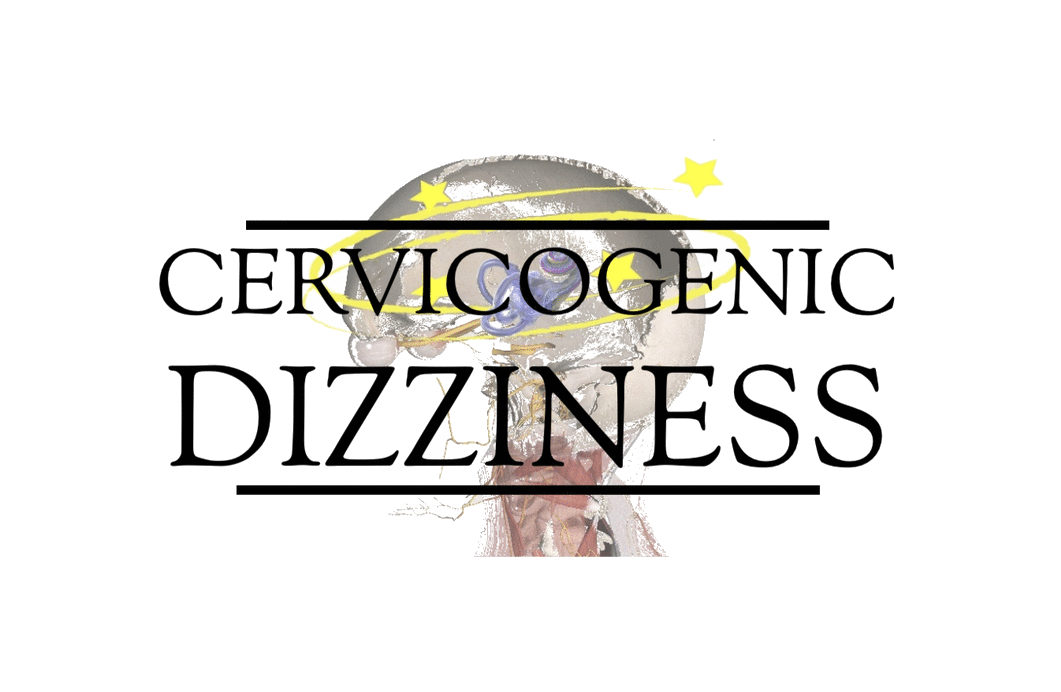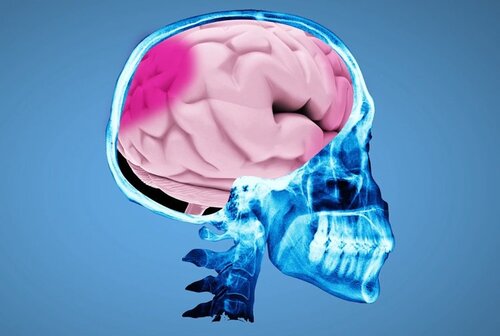
How common is Cervicogenic Dizziness in Concussion?
Over 80% of concussions have been observed to recover within 7-10 days, but ~20% of sports-related concussions can take longer than this period of time to resolve. Predictors and factors associated with a protracted recovery and reasons for post-concussive symptoms can be of many reasons but for the purpose of this post, we will delve into the cervical spine.
You can't disagree that assessment of the cervical spine in post-concussion management and treatment is important. However, the prevalence of cervical spine pathology in concussed patients is unknown. Many authors express interest and promote the manual assessment of the cervical structures. I recommend delving into the research by these authors: Leddy et al 2015, Gergen 2015,
Even though concussion research and awareness has spiked in the last few years, you can also go back to 1956 to read an article by Seletz in Calif Med Journal entitled, "Craniocerebral Injuries" (a free paper). So, yes, this concept is not new.

However, if you're looking for a newer model to adopt, I recommend reading Mark Lundblad's work in 2017 paper in Int J Sport Phys Ther entitled, "A Conceptual Model for Physical Therapists Treating Athletes with Protracted Recovery Following a Concussion". He does mention that the first component to address (prior to neuromuscular control and strengthening) is cervical mobility and C1-2 should be of particular importance.
In regards to Cervicogenic Dizziness following Concussion, we don't know the prevalence rates of Dizziness itself from the Cervical Spine but we do know most common symptoms are headaches, dizziness, fatigue and other range of cognitive deficits. More research and scientific inquiry is on headaches vs dizziness from the cervical spine, but we can all agree even though we are looking at a proprioceptive vs nocioceptive alteration in input, that some of the actual structures at fault can be similar.

There will be tons more coming out in the concussion literature over the next few years to aid in prevalence rates themselves, but here are studies we present to our classes:
Just recently, Ellis et al 2018, in a retrospective cohort study, actually looked at Cervical Spine Dysfunction in Pediatric Sports Related Concussion. Out of the 246 patients included in the study, 80 of them (32.5%) met the criteria for cervical spine dysfunction. The authors conclude that cervical spine dysfunction can be a risk factor for delayed clinical recovery.
Kennedy et al 2017, in a retrospective chart review study, found that 32 of 45 (69.5%) of patients with persistent post-concussion symptoms, were found to have cervicogenic component. The authors highlight the value of physiotherapy assessment and treatment of the cervical spine following a concussive injury.

Reneker et al 2015, in a cross-sectional study of athletes after a concussion, found 82.9% had cervical involvement and 26.8% presented with Cervicogenic Dizziness.
A classic, Scheider et al 2014, in a randomized controlled trial to treat concussion in adolescents, found 100% of patients in both treatment AND control group had cervical spine findings. Moreover, 93.33% in treatment group had neck pain while 87.5% in control group had neck pain. Additionally, 86.33% had dizziness in treatment group and 82.75% had dizziness in control group.
Marshall et al 2015, albeit a review paper BUT also a case series, discusses the role of many theories causing post-concussive syndrome. Pertinent to this post, the authors give credence to "a very treatable" cause of it---the cervical spine. All of the cases demonstrate several different types of manual therapies to the cervical spine to aid in improving symptoms.
Growbaski et al 2017, in a retrospective cohort study, expressed that over 75% of the patients experienced symptoms consistent with peripheral vestibular disorder or cervicothoracic dysfunction, either in isolation or in various combinations, in their multimodal, impairment-based PT approach to treating post-concussion syndrome.
Browne GJ 2006 found that in the retrospective descriptive case series study of 125 children who injured their cervical spine while playing rugby football, 98% of them had neck pain (of course if injured neck), but out of these 125 children, 23% had a concussion.
Jensen et al 1990 found that 18 out of 19 (94.7%) patients with persistent post-concussive syndrome had upper cervical spine restrictions when compared to an uninjured control group. Their work concludes that it supports the hypothesis of a cervical mechanism causing post-traumatic headache and suggests that post-traumatic dizziness, visual disturbances and ear symptoms could be part of a cervical syndrome.
Treleaven et al 1994 demonstrated in 12 patients with post-concussive had upper cervical spine dysfunction compared to a normal control group. This study examined headaches.
Going back even further, Mager et al 1989, noted a block of the upper cervical spine and of the cervicothoracic area was proved in 83.53% of patients who were hospitalized upon a head injury.
HOW COMMON IS CERVICOGENIC DIZZINESS AFTER CONCUSSION?

The values above are just several examples of prevalence rates of cervical component in head injury from concussion. Unfortunately, I don't have specific values for you as most studies lump Cervical Dysfunction as criteria to treat musculoskeletal symptoms or Dizziness symptoms in peripheral disorders but don't differentiate between the two.
However, we can at least appreciate that 1/4 of patients with concussion have Cervicogenic Dizziness following results of Jennifer Reneker's work in 2015. What do you see in the clinic? Do you think the percentage is larger than what is presented in the research?
I hope this provides you some phenomenal information to take back to the clinic! Overall, we can definitely rule out the cervical spine via a few tests and if you can't rule it out, we do have some specific tests to aid in ruling in the condition.
Also---keep in mind, this data doesn't include the plethora of information from the whiplash-associated disorder diagnoses either! You will see a future post on this data so sign up for email alerts! If you're seeing head injury patients, post-concussion syndrome, and even whiplash and do not address the cervical spine, I hope this post gives you credence to examine it further.
Cervicogenic Dizziness Course
You can learn more about the screening and treatment process of Cervicogenic Dizzinesss through Integrative Clinical Concepts, where the authors (husband–a manual therapist a wife—a vestibular specialist), teach a very unique course combining both the theory and practice of vestibular and manual principles in their 2-day course. Pertinent to this blog post, the 2nd day includes the “Physio Blend”, a multi-faceted physiotherapist approach to the management of Cervicogenic Dizziness, which includes treatments of the articular and non-articular system of manual therapy and the most updated sensorimotor exercise regimen.
If you would like to host a course for your staff (either a vestibular, neuro, sports or ortho clinic), please do not hesitate to contact me at harrisonvaughanpt@gmail.com for more information.
AUTHORS
Harrison N. Vaughan, PT, DPT, OCS, Dip. Osteopracic, FAAOMPT
Instructor: Cervicogenic Dizziness for Integrative Clinical Concepts
Danielle N. Vaughan, PT, DPT, Vestibular Specialist
Instructor: Cervicogenic Dizziness for Integrative Clinical Concepts



